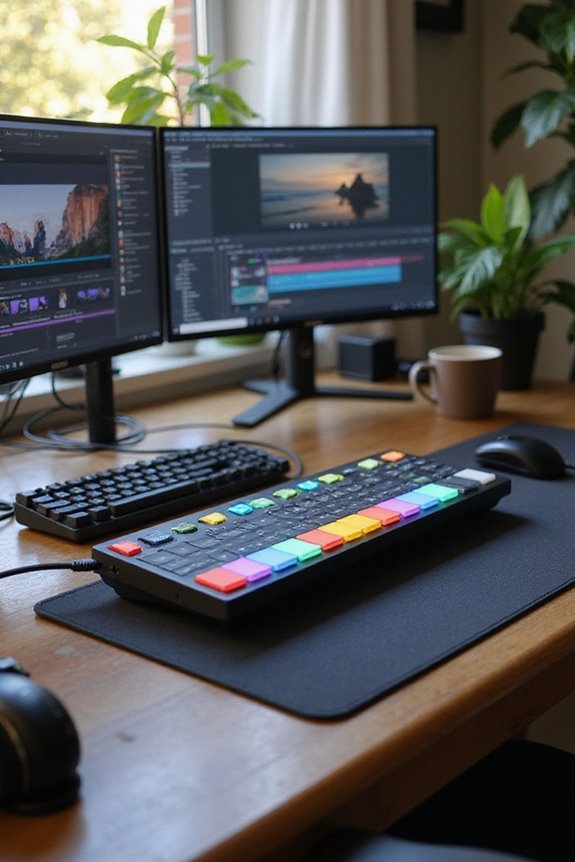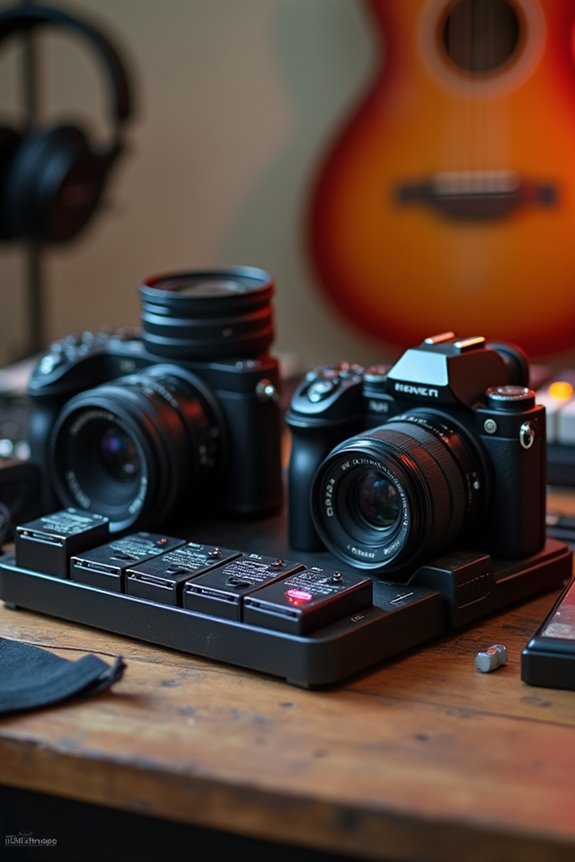To use a Stream Deck for workflow automation, we start by connecting it to our computer and installing the latest software. Next, we customize profiles for tasks, like video editing or virtual meetings, using unique icons for easy reference. By utilizing multi-actions, we can streamline complex processes, such as launching programs and executing keystrokes with a single button. Integrating plugins, like Zoom or Microsoft Teams, further enhances our efficiency. There’s much more to discover about optimizing our setup effectively.
Key Takeaways
- Create unique profiles for different workflows to tailor your Stream Deck setup for specific tasks, enhancing efficiency and automation.
- Utilize multi-actions to combine several tasks into one button press, simplifying complex workflows and automating repetitive processes.
- Incorporate essential plugins like Zoom and Microsoft Teams for direct control over meeting features, streamlining collaboration and saving time.
- Organize actions into folders and pages for easy navigation, reducing manual reconfiguration and optimizing workflow management.
- Regularly update the Stream Deck software and customize layouts to adapt to evolving needs, ensuring maximum productivity and functionality.
Getting Started With Stream Deck Setup
When we immerse ourselves in setting up our Stream Deck, the first step is essential for guaranteeing a seamless experience. For our initial setup, let’s connect the Stream Deck directly to a USB port on our computer, steering clear of USB hubs to maintain stable performance. Next, we should download and install the latest Stream Deck software from the Elgato website. Once installed, launching the app will guide us through further setup.
To enhance our workflow, we’ll utilize the included stand and adjust its legs for ideal ergonomic positioning. This guarantees easy access to our keys, minimizing strain during use. Finally, let’s remember to keep the software updated for the latest features and improvements.
Customizing Profiles for Different Work Contexts
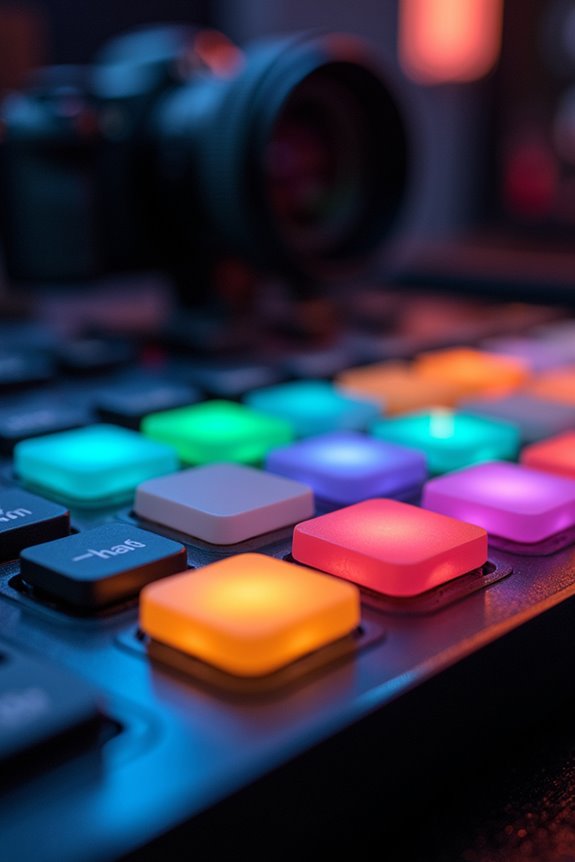
Customizing profiles for different work contexts can markedly enhance our efficiency, especially when we juggle multiple applications or tasks throughout the day. By focusing on profile creation, we can tailor unique layouts for specific workflows, such as video editing or virtual meetings. Each profile can include customized icons—using 72x72px .jpg or .png files—making it easier to identify actions at a glance.
We can quickly switch between profiles, reducing the manual reconfiguration often needed when changing tasks. Organizing our actions into folders and pages further streamlines navigation, ensuring we stay productive. Plus, sharing customized profiles fosters collaboration with our teams, allowing everyone to benefit from optimized workflows tailored to their roles.
Utilizing Multi-Actions for Complex Workflows
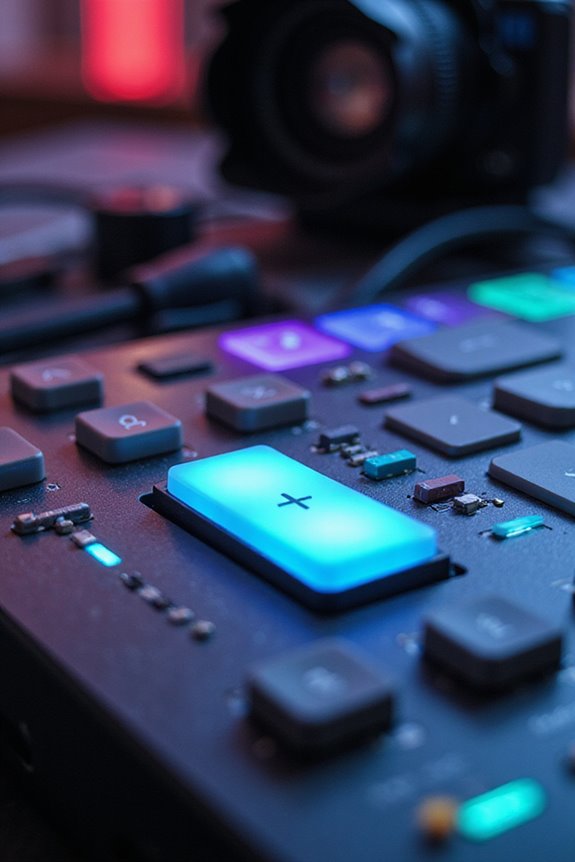
Utilizing multi-actions can greatly simplify our workflows, especially during busy workdays filled with repetitive tasks. These powerful sequences combine multiple actions into a single button press. For instance, we can create multi-action examples that launch several applications, input keystrokes, and open specific files in one go. By incorporating action timing, we can add delays between steps, ensuring everything loads properly before the next command executes. This feature allows us to automate lengthy processes, like setting up for a video conference or managing software development tasks. After configuring a multi-action, it’s essential to test it for proper execution, ensuring our workflows run smoothly and efficiently without unnecessary errors.
Essential Plugins and Integrations for Enhanced Functionality
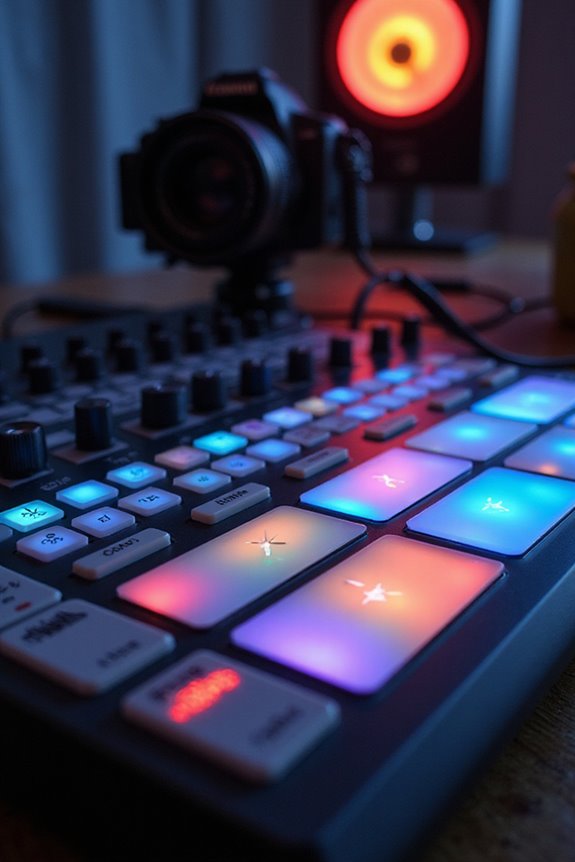
To enhance our Stream Deck experience, we can tap into a variety of essential plugins and integrations that considerably boost functionality. For example, the Zoom plugin allows us to control meeting features like muting participants and monitoring our camera status directly from the Stream Deck. Similarly, the Microsoft Teams integration streamlines virtual collaboration, providing quick access to meeting controls.
Additionally, the Keyboard Maestro plugin empowers us to create complex macros, expanding our automation capabilities. We can also use IFTTT for smart home device automation, triggering actions with a single button press. These plugin benefits not only improve our productivity but also simplify our workflow, making our Stream Deck an invaluable tool in our daily tasks.
Best Practices for Organizing and Optimizing Your Workflow
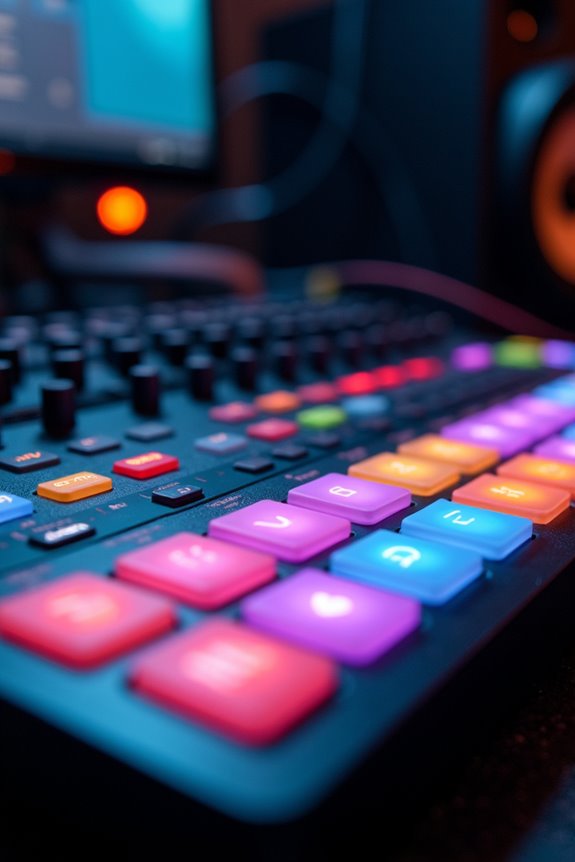
Effective organization of our Stream Deck can greatly enhance our productivity and streamline our tasks. To begin, clear button labeling with consistent naming conventions helps us identify functions quickly. We should also implement profile management, creating separate profiles for different workflows, and using color coding to categorize buttons effectively. When it comes to layout design, grouping related commands minimizes hand movement and speeds up our actions. Additionally, macro testing guarantees that multi-action sequences run smoothly, allowing for workflow scaling across various projects. Regularly updating our Stream Deck software and refining our setup keeps it aligned with our evolving needs. By following these best practices, we can optimize our Stream Deck for maximum efficiency and effectiveness.
Maximizing Productivity With Stream Deck Automation
Maximizing productivity with Stream Deck automation can transform the way we handle our daily tasks, especially in fast-paced environments. By streamlining communication through integrated video conferencing tools, we can quickly toggle settings, launch meetings, and manage participants—all with a single button press. This efficiency not only reduces distractions but also enhances focus during our calls.
Furthermore, utilizing multi-action automation allows us to execute complex workflows effortlessly. For instance, we can launch Microsoft Teams, adjust lighting, and start timers simultaneously, preparing us for meetings in seconds. With customizable profiles, we can adapt our Stream Deck to various tasks, ensuring that the right commands are always at our fingertips. Together, we can elevate our productivity with these powerful automation tools.
Frequently Asked Questions
Can I Use Stream Deck With Gaming Consoles?
Unfortunately, we can’t use Stream Deck for gaming console integration. Its compatibility’s limited to PC tasks, meaning we can’t control consoles directly. However, we can enhance our streaming experience through PC-based automation while gaming.
How Do I Reset My Stream Deck to Factory Settings?
If we’re looking to reset our Stream Deck to factory defaults, we should explore various resetting techniques. While there’s no direct option, backing up profiles and restoring them can help us revert settings effectively.
Is There a Mobile App for Stream Deck?
Sure, we’ve got options! With the Stream Deck mobile app, we can transform our devices into customizable keypads, enabling seamless control, multitasking, and creativity—just like the physical Stream Deck, but with added portability!
Can I Share My Stream Deck Profiles With Others?
Yes, we can share our Stream Deck profiles with others easily. By exporting and importing actions, we guarantee profile compatibility across devices, enhancing collaboration and saving time for everyone in our community.
Does Stream Deck Support Custom Button Shapes or Sizes?
Custom button designs are like beautiful frames around a picture; they enhance our experience. Unfortunately, the Stream Deck’s adjustable button dimensions are fixed, meaning we can’t change their shapes or sizes, only the displayed icons.

